Very soon, one of the most important launches in recent years will take place from the Kourou cosmodrome in French Guiana. The Ariane 5 rocket will send into orbit the James Webb Telescope (JWST) — the most complex and expensive space observatory of all time. On this occasion, we have prepared a selection of the ten most interesting facts about the history of this spacecraft, its structure and purpose.
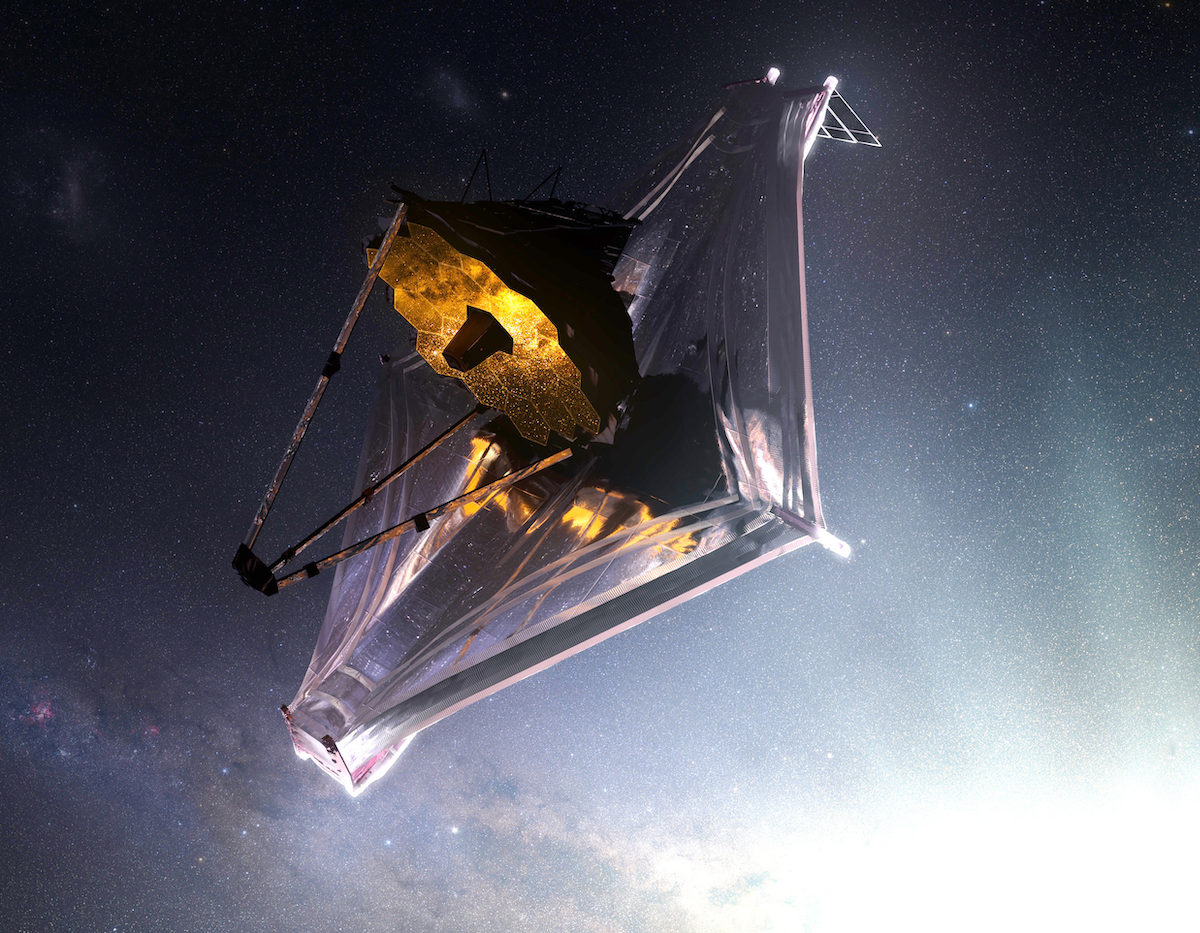
Creation of JWST took a quarter of a century
The origins of JWST date back to the mid-1990s, when NASA began developing a next-generation infrared telescope project called NGST (Next Generation Space Telescope). Initially, it was supposed to be equipped with an eight-meter mirror, and they hoped to spend only USD 500 million on the construction of the device. However, it quickly became obvious that this figure was overly optimistic. In the future, the project underwent many serious metamorphoses and received a new name — in honor of NASA administrator James Webb, who held this position from 1961 to 1968.
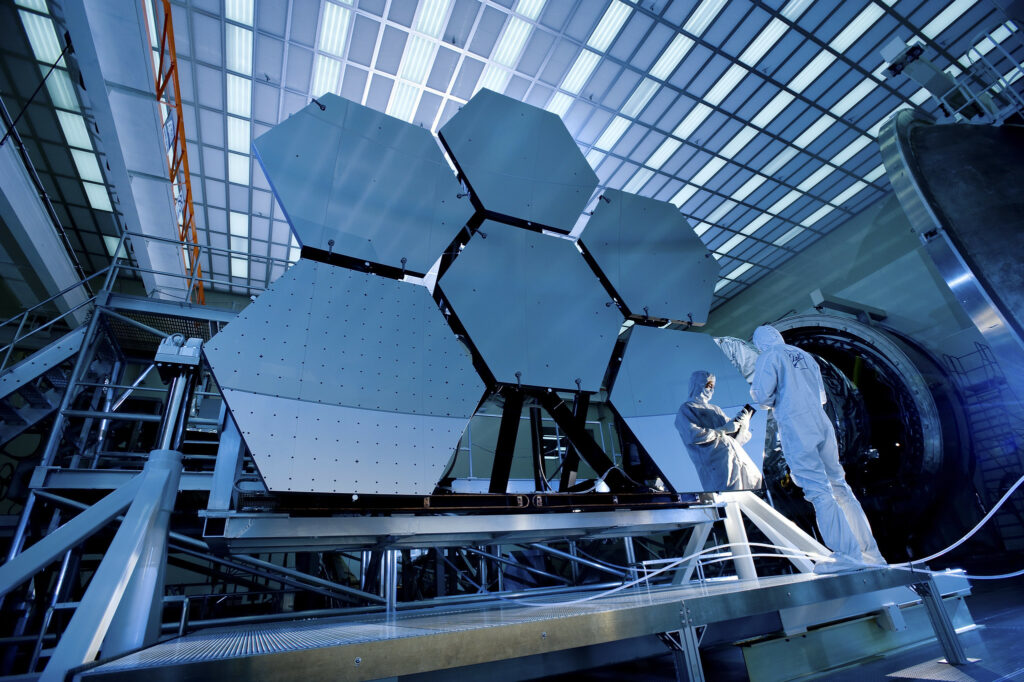
Production of the first JWST components began in 2004. The preliminary design of the new telescope was agreed in 2008, and the final approval of the project took place in 2010. The manufacture of the last components of the telescope was completed in 2016, they were first combined into a single unit in 2019.
JWST — International project
Despite the fact that NASA is the main “financier” of JWST, this is not a purely American project. The space agencies of Europe and Canada were also actively involved in the creation of the telescope. In total, several thousand scientists and engineers from 15 countries of the world were involved in the project. 258 companies, government organizations and scientific institutions (142 from the USA, 104 from Europe and 12 from Canada) contributed to the creation of JWST.
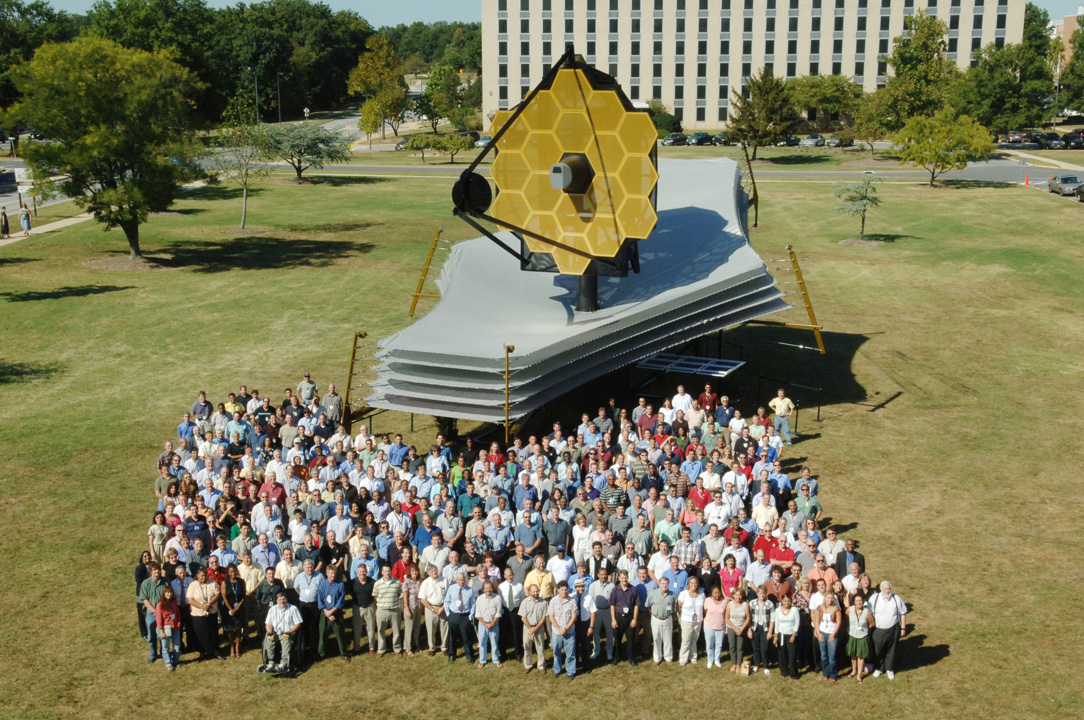
Largest space telescope in history
In terms of size (20.2×14.2 m), JWST is the largest space telescope in history. Such impressive dimensions are due to two key components of the observatory — its main mirror and sunscreen.
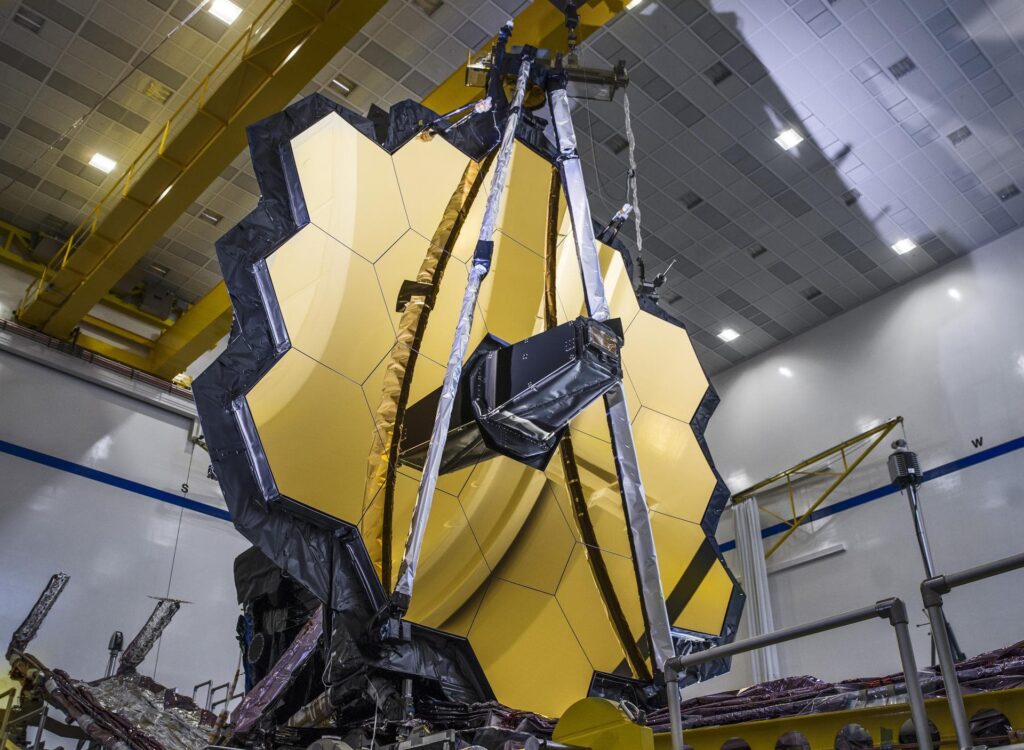
The main mirror of the JWST consists of 18 beryllium segments of hexagonal shape. The area of its collecting surface is 25 m². This is the largest mirror in history, which will be taken out of the earth’s atmosphere. Due to its impressive size, it will be in a collapsed state during launch. It will be revealed already in space.
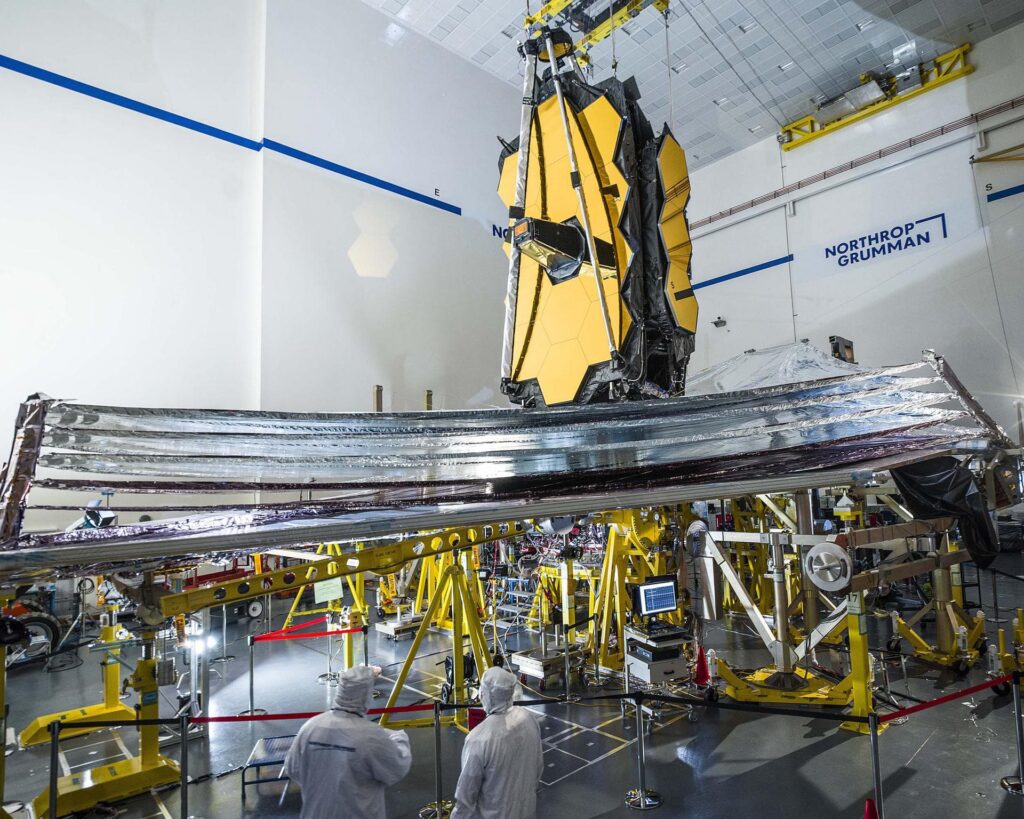
The sunscreen is designed for passive cooling of JWST to maintain a minimum temperature of -223 °C, necessary for the successful operation of scientific instruments. The screen consists of five membranes made of kapton material, and when unfolded has an area of 300 m², which is larger than a tennis court for a pair game. To fit the screen into the cargo compartment of the launch vehicle, it will be folded 12 times.
Most expensive space telescope in history
JWST holds the title of not only the largest, but also the most expensive telescope in history. When the project was finally approved in 2010, NASA estimated the cost of its creation at USD 6.5 billion. But due to various technical problems and delays, the final estimate has grown to 9.7 billion. Because of this, the US Congress even wanted to cancel the JWST, but in the end the telescope was defended.
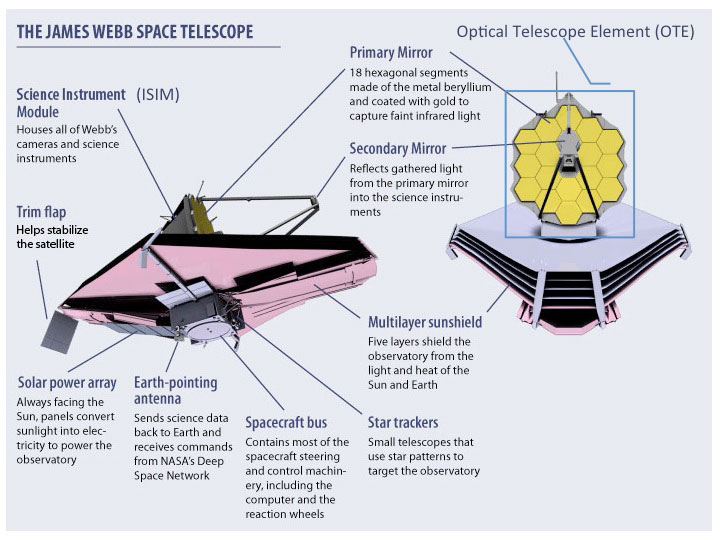
It is worth noting that the figure of USD 9.7 billion includes only NASA spending. ESA has invested 700 million euros in the project, Canada – 200 million Canadian dollars. The launch of JWST on an Ariane 5 rocket from the Kourou Cosmodrome is also part of Europe’s financial contribution to the new telescope.
Launch of JWST was repeatedly postponed
In the early stages of development, JWST was planned to be launched in 2010. When the project was approved, 2016 appeared as the launch date. As a result, five more years were added to this. Due to the constant postponement of the launch date of the device, some jokers even came up with their own interpretation of its abbreviation — Just Wait Space Telescope.
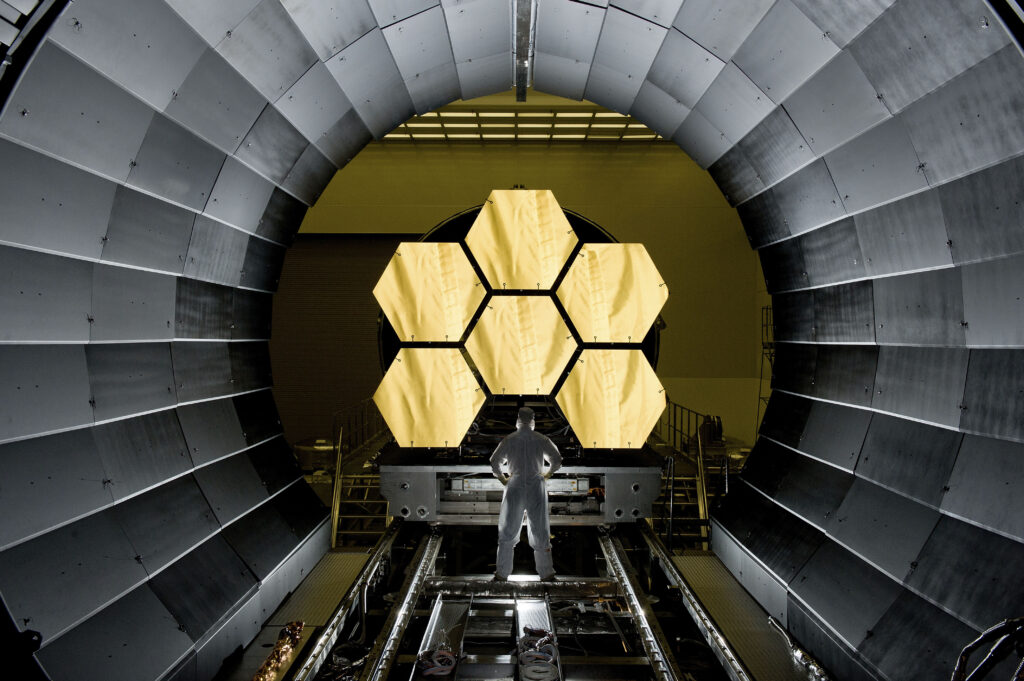
The main reason for the postponements is the innovative design of JWST. Before that, NASA had never built telescopes equipped with deployable mirrors and sunscreen. As a result, they had to be created from scratch. And it was obvious that the designers seriously underestimated the complexity of such a task. The COVID-19 pandemic also contributed. Because of it, the launch of the telescope was postponed for almost a year.
JWST could see a bumblebee on the Moon
JWST is often referred to as Hubble’s successor, but this comparison is not entirely correct. Hubble is capable of conducting observations in the ultraviolet, visible and near infrared range. JWST — in the visible, near and middle infrared range. This will allow it to penetrate through the dust clouds that fill interstellar space and observe the most distant objects in the Universe formed immediately after the Big Bang.

We can talk for a long time about the sensitivity and resolution of the new telescope. But it’s easier to give such an example. According to the project staff, JWST is so powerful that it could distinguish details the size of a one-cent coin at a distance of 40 km and catch the thermal signature of a bumblebee on the surface of the Moon.
JWST will be located at a distance of 1.5 million km from Earth
Unlike Hubble, which is in lower Earth orbit, the JWST working position will be located much further away — at a distance of 1.5 million km from Earth at the Lagrange point L₂ of the Sun-Earth system.
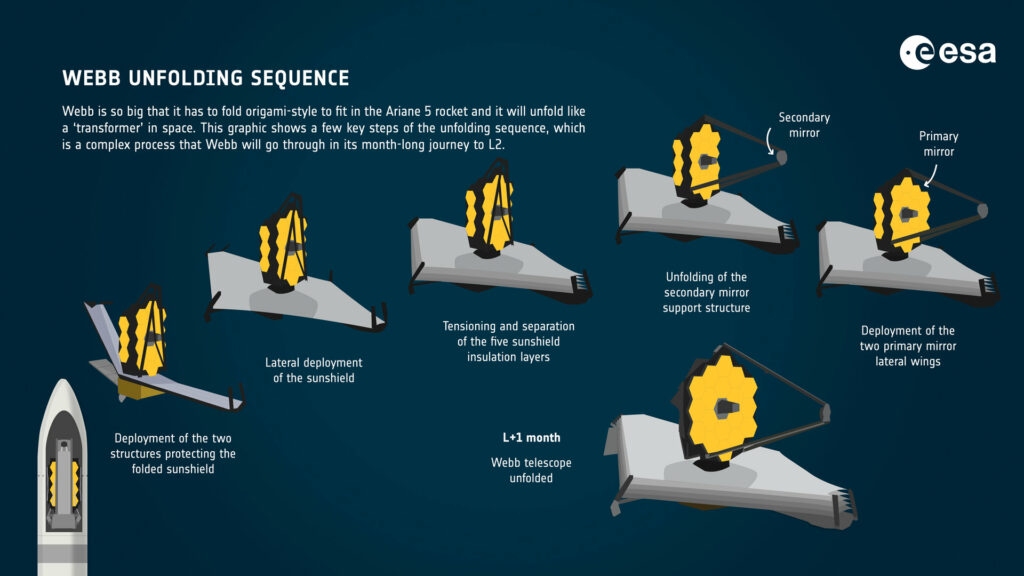
It will take about a month for JWST to get to the desired point. During this journey, engineers will begin to open its sunscreen and deploy the main and secondary mirrors. Next, the telescope will need several more months to test and calibrate scientific instruments. Only after that JWST will be able to start its extremely busy observation program. NASA hopes that its term of operation will be at least ten years.
JWST is not designed for maintenance missions
Another key difference between JWST and Hubble is the impossibility of its orbital repair. Hubble was designed with the expectation of periodic visits by manned expeditions. But even if the shuttles were still flying, they would still never be able to reach JWST, because they could not travel to deep space.
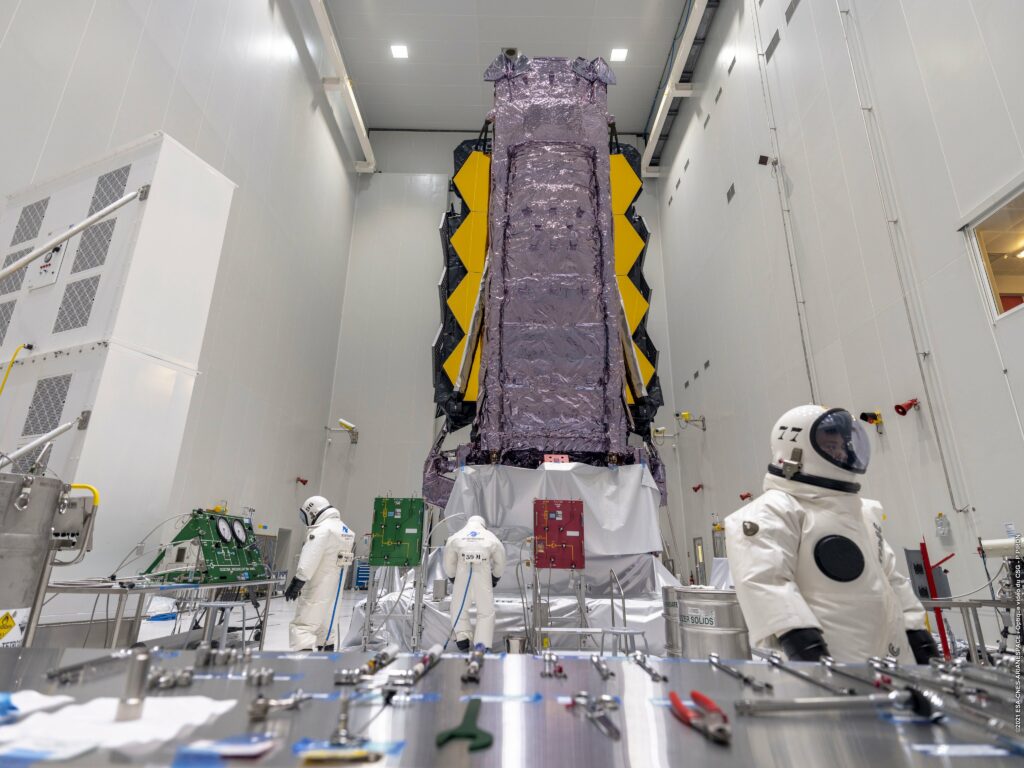
Therefore, from the very beginning, the JWST was designed as a completely “self-sufficient” device. This also means that in case of any failure, it can be fixed only using the internal reserves of the telescope itself.
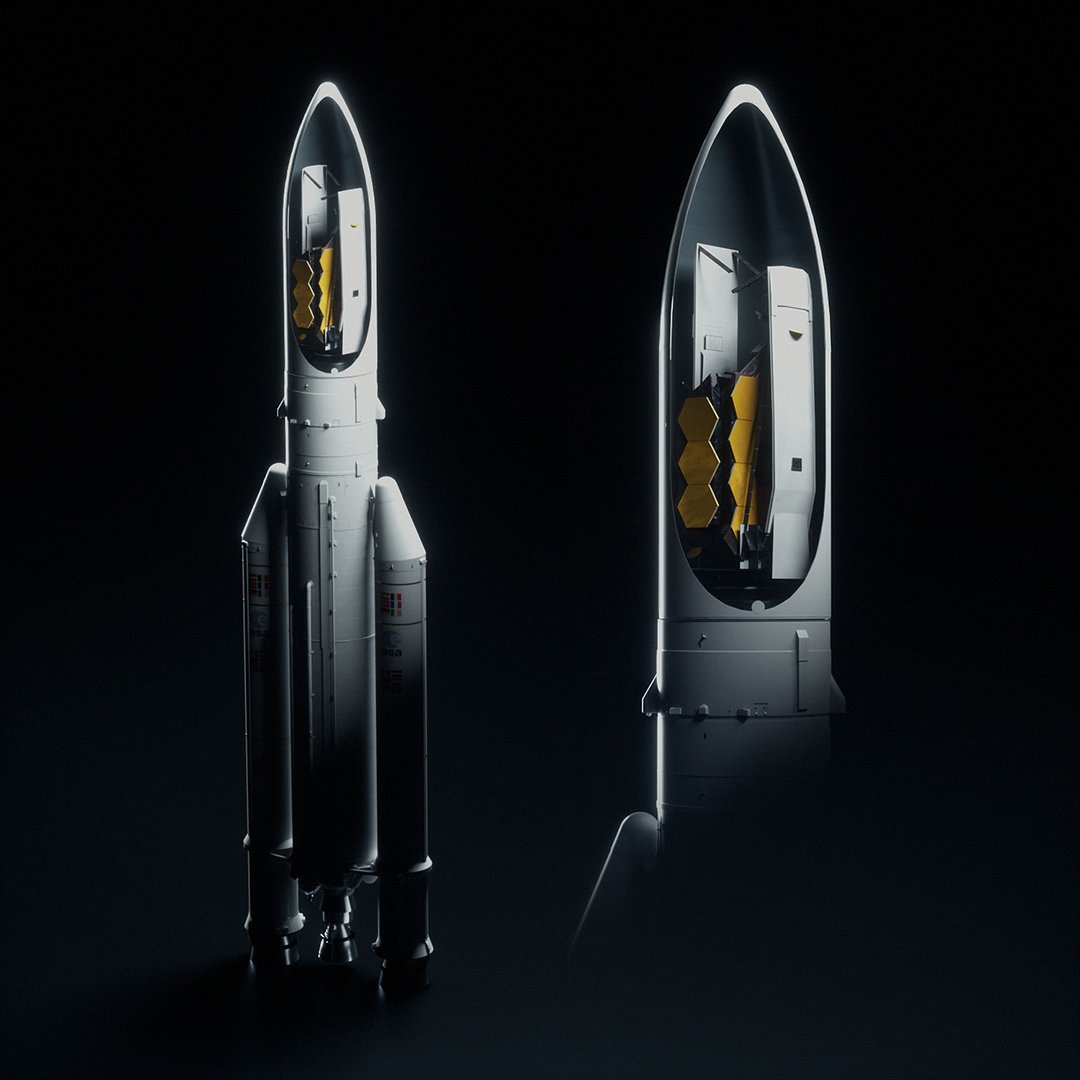
However, just in case, the engineers still added a docking ring to the JWST design. Who knows, maybe in the future NASA will still find some way to send a maintenance mission to it.
JWST can see the light of the first stars in the Universe
Astronomers around the world are looking forward to the start of the JWST. Thanks to its record-breaking mirror and the ability to conduct observations in the infrared range, it will provide them with unprecedented opportunities to study the Universe. In particular, it is expected that JWST will be able to see the light of the earliest stars and galaxies formed shortly after the Big Bang. In fact, it will become a kind of time machine that will allow scientists to answer a number of key cosmological questions concerning how the Universe acquired its current form.
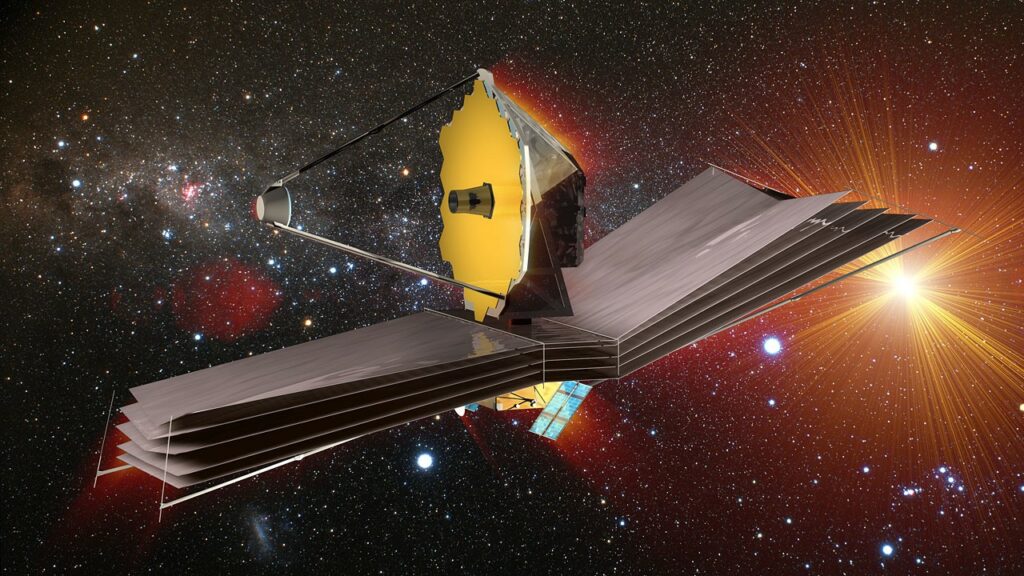
JWST will make a breakthrough in the study of exoplanets
In addition to exploring the first galaxies, JWST will also be used to study exoplanets. It will be able not only to find and determine the characteristics of extrasolar worlds, but also to conduct a detailed chemical analysis of their gas shells in order to detect possible biosignatures. This could revolutionize the study of exoplanets. It is also expected that JWST will be able to find exomoons.

JWST will be used for other purposes as well. These include the study of black holes, molecular clouds and protoplanetary disks. JWST is also used for observations of objects in our Solar System. Especially great emphasis will be placed on the study of the aquatic worlds — Europa and Enceladus. JWST will look for biosignatures in the emissions of their geysers.
Follow us on Twitter to get the most interesting space news in time
https://twitter.com/ust_magazine

